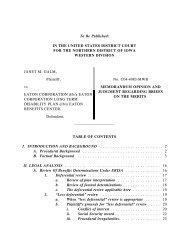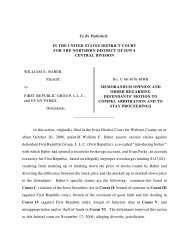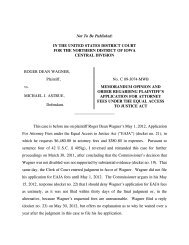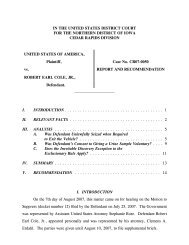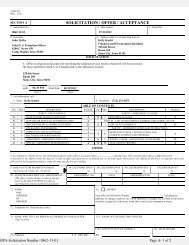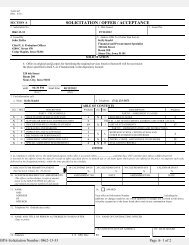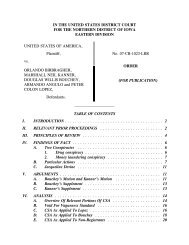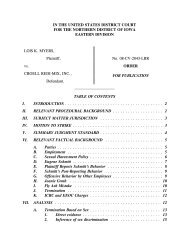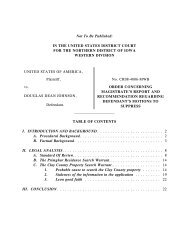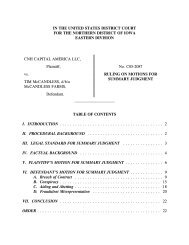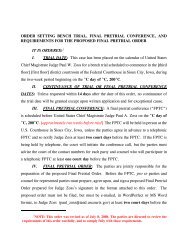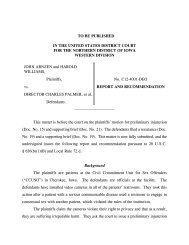Shannon v. Koehler - Northern District of Iowa
Shannon v. Koehler - Northern District of Iowa
Shannon v. Koehler - Northern District of Iowa
You also want an ePaper? Increase the reach of your titles
YUMPU automatically turns print PDFs into web optimized ePapers that Google loves.
Cummings. In Cummings, the plaintiff’s convictions were doubly probative for his<br />
credibility because they were admissible both under Rule 609(a) and to contradict his trial<br />
testimony. See Cummings, 995 F.2d at 825-26. <strong>Shannon</strong>’s conviction falls within Rule<br />
609(a), but it lacks the extra layer <strong>of</strong> probative value present in Cummings, as there is no<br />
indication here that <strong>Shannon</strong>’s 2011 conviction, which occurred five years after the events<br />
in this case, will contradict his trial testimony. Additionally, <strong>Shannon</strong>’s OWI conviction<br />
occurred after his deposition on December 18, 2008. See Timothy <strong>Shannon</strong>’s Deposition<br />
at 1, Exhibit 1 to Defendants’ Motions In Limine (docket no. 98-1). <strong>Shannon</strong>’s 2011<br />
conviction has no probative value for his credibility in his deposition in 2008, and it is<br />
<strong>Shannon</strong>’s deposition that will effectively control his trial testimony through the possibility<br />
<strong>of</strong> impeachment. Therefore, his conviction <strong>of</strong>fers even less probative value for his<br />
credibility at trial.<br />
Moreover, admitting the nature <strong>of</strong> the OWI conviction would be unfairly prejudicial<br />
to <strong>Shannon</strong>. The name <strong>of</strong> the <strong>of</strong>fense,“Operating While Intoxicated, 3rd <strong>of</strong>fense,” see<br />
Defendants’ Exhibit 1011, indicates a pattern and propensity for dangerous behavior while<br />
intoxicated. The jury, in their task <strong>of</strong> evaluating the reasonableness <strong>of</strong> <strong>Koehler</strong>’s conduct,<br />
may consider “whether the suspect poses an immediate threat to the safety <strong>of</strong> the <strong>of</strong>ficers<br />
or others.” See Graham, 490 U.S. at 396. The jury will already know that <strong>Shannon</strong> was<br />
intoxicated during his encounter with <strong>Koehler</strong> on September 13, 2006, because the parties<br />
have stipulated to that fact. However, when presented with <strong>Shannon</strong>’s 2011 “Operating<br />
While Intoxicated, 3rd <strong>of</strong>fense” conviction, the jury could assume that, in conformity with<br />
his character, <strong>Shannon</strong> was not only intoxicated on September 13, 2006, but also was<br />
acting dangerously and presented a threat to those around him. The risk <strong>of</strong> unfair<br />
prejudice stemming from the “3rd <strong>of</strong>fense” component <strong>of</strong> the conviction substantially<br />
outweighs any additional probative value it could <strong>of</strong>fer for <strong>Shannon</strong>’s credibility.<br />
44



